Your name here?
March 19, 2014
Attorney Steve Hansen makes no apologies for getting under the skin of government bureaucrats. “If I annoy people,” he says, “it’s for good reason. I only nag about stuff that’s justifiable.”
Most of his nagging has centered on the county’s bike paths, particularly the San Gabriel River Bikeway, which begins in Azusa and ends in Seal Beach. An avid, high-mileage cyclist, Hansen’s been riding it for nearly three decades. His dad, at age 78, still gets out there on his bike four times a week.
For years, Hansen has been firing off emails complaining about everything from the bikeway’s underpass dangers to its undulating asphalt to potential crime problems along the 28-mile route. Many of those bluntly-worded missives have filled the in-box of Allan Abramson, a senior civil engineer in the L.A. County Department of Public Works, who, among other things, oversees bikeways.
He calls Hansen, who heads a community advocacy group in Lakewood, “a gadfly.”
“On certain things, he’s very reasonable,” Abramson says. “In some things, there’s a certain semblance of unreasonableness.”
But late last year, Abramson says, the gadfly hit on an idea that made sense. “A winner,” Abramson calls it. (“A no-brainer,” in Hansen’s words.) He suggested that the county start an adopt-a-bike path program along the San Gabriel River Bikeway, modeled after popular state highway programs, complete with signs recognizing those who’ve adopted a stretch to keep clean.
Hansen says a bike club with which he was riding “thought it would be cool to have their name on the path. It was an advertising thing, for a good cause.” Public works officials liked the idea so much that they decided to expand it to dedicated bikeways throughout the county. They’ll be promoting the program, scheduled to be launched in the weeks ahead, as a way for organizations and individuals to support health, recreation and “active transportation” in their local communities.
Abramson acknowledges that the program probably wouldn’t have happened without Hansen’s agitation. “I’m comfortable giving him credit,” Abramson says.
Under draft requirements of the adopt-a-bike path program, organizations, businesses and individuals who want to participate must commit to collecting litter, sweeping and trimming vegetation along the path at least four times a year for a minimum of two years. There’ll be no costs to the adoptees. Vests, hardhats and trash bags will be supplied by the county, along with the program’s biggest draw: recognition signs that would be placed at each end of an adopted stretch.
Throughout the county, numerous segments of the 100 miles of bike paths maintained by the county will be up grabs—from the foothills to the sea.
Abramson says some details of the program remain to be worked out, including the county’s potential right-of-refusal when it comes to certain groups or individuals who might apply. “You don’t want to say on a sign that ‘the American Neo Nazis adopted this,’” Abramson explains.
He says the county also opted not to make painting over graffiti part of the program. “If gang members saw people spraying over their gang insignias, they could be in peril,” Abramson says.
As for Hansen, who’s been on cycling adventures throughout the world, he says he’ll continue riding the region’s public officials to make sure they keep making improvements on his home turf.
“I’ve been riding that path since 1986,” Hansen says, “and I know where all the problems are.”
Posted 3/19/14
A Strad-studded event
March 13, 2014

Elizabeth Pitcairn's Red Mendelssohn will be among eight Stradivari violins at the L.A.Chamber Orchestra's upcoming "Strad Fest" event. Photo/Joy Strotz
Jerry Kohl and his wife Terri are philanthropists from Pasadena and founders of the Brighton’s accessories chain. In their spare time, though, the Kohls are music lovers, and in 2006, they decided to buy one of the rarest and most coveted violins on the planet and make it available to musicians in Los Angeles.
“Stradivarius violins are like wines,” Kohl says. “There are good ones and then there are great ones, and all the great ones were being bought up by countries and museums, so it wasn’t going to be long before they were all gone. I wanted to see a great one here in L.A., and that’s how it started.”
Kohl called the curator of musical instruments at the Smithsonian for advice. He tapped Martin Chalifour, concertmaster at the L.A. Philharmonic. He called Margaret Batjer, the Los Angeles Chamber Orchestra’s concertmaster. He found dealers in London, Chicago and Vienna.
Finally, he narrowed his list to a handful of rare instruments, made during the brief “Golden Period” in which the legendary Italian luthier Antonio Stradivari was said to have done the work of a lifetime. Excitedly, he summoned all the dealers to Disney Hall for a play-off.
And when Batjer began to weep as she played the violin he eventually picked—a 1716 Stradivarius that had belonged to the virtuoso Nathan Milstein—Kohl says he realized he had witnessed “something magic”.
“It was as if she was playing a part of history,” he says.
Eight years later, Kohl and his violin are setting the stage for another magical and historical moment—one that, this time, will be open to all of L.A. From March 26-29, eight Stradivarii from the Golden Period will converge for an unprecedented series of concerts, inspired in part by the private “Strad fest” Kohl got to witness.
“Strad Fest L.A.” will feature some of the most storied instruments on the planet, played by some of the world’s finest musicians. Starting with a private March 26 reception for scholars at the Huntington Library, and encompassing public concerts in Downtown L.A. and Santa Monica before culminating at a Saturday night gala fundraiser, the series will feature not only Kohl’s violin but three other locally-owned Strads. Two will come to town with the violinists who’ll play them, while two more will be brought in from London by the son of Kohl’s dealer.
All told, the event will showcase many millions of dollars worth of 300-year-old masterpieces, a rare gathering, given that fewer than 650 of the 1,000 or so instruments made by Stradivari and his sons are still in existence, and only about 60 or 70 of them hail from the Golden Period, which—depending on collectors’ various definitions—ranges from about 1700 to the late teens or early 1720s.
And if some of the concerts have a “battle of the Strads” feel, it may be because Kohl—a major chamber orchestra supporter who made the largest monetary gift in the orchestra’s history last year—suggested the concept during a brainstorming conversation last year for the annual gala.
“I said, ‘For 300 years, scientists, musicians, violin makers, people of all sorts have tried to figure out why the Stradivarius is so magical’,” Kohl remembers. “’So why don’t you honor the violin?’”
The suggestion became “an inspiration,” the L.A. Chamber Orchestra’s executive director, Rachel Fine, says. “We realized there were actually quite a few Stradivari violins right here in town.”
Last season, for instance, Dr. William Sloan, a urologist and amateur violinist from Los Feliz, and his law professor wife, Judy, had loaned their 1714 “Leonora Jackson” Stradivarius to the orchestra’s assistant concertmaster for a world premiere. Violinists at the L.A. Philharmonic had access to several in the Phil’s collection, including the 1711 Stradivarius formerly owned by the great composer Fritz Kreisler.
The 1720 “Red Mendelssohn” Stradivarius that inspired the Academy Award-winning film, “The Red Violin” has been owned for years by violinist Elizabeth Pitcairn, who teaches at the Colburn School downtown.
Then there were all the friends of musicians at the chamber orchestra who had Stradivarius connections. Cho-Liang Lin, the music director of La Jolla Music Society’s SummerFest, owns the 1715 “Titian” Stradivarius, which is revered for its orange-red color and unusual power. Philippe Quint plays the 1708 “Ruby” Stradivarius, thanks to the Stradivari Society, which loans it to him.
“We started adding more and more Strads and more and more players who could play them,” says the chamber orchestra’s general manager, Andrea Laguni. “And then we decided that it seemed unfair to share this only with the few people who could attend the gala.”
So, Laguni says, they added the Huntington event “to share with another cultural institution and their base of donors,” and then inserted a cameo Strad appearance into an already-planned Thursday night Baroque Conversation. By that time, he says, it seemed only fitting to throw in the Friday night “FiddleFest” at Santa Monica’s Broad Stage, at which the violinists will attempt to outplay each other in a program of solos, duos, trios and quartets. Tickets for that event start at $45; the gala is $750 a head.
The planning took the better part of a year, Laguni says, although it was simplified by the fact that half of the violins—and half of the violinists—are from Greater L.A.
The musicians will range from world-renowned players like Chalifour to newcomers like Ray Ushikobo, a 12-year-old Riverside prodigy. And most will bring violins that they own or that are regularly on loan to them. The exceptions will be Ushikobo and Xiang Yu, another prizewinning young violinist; their violins—the 1666 “Serdet” and the 1720 “Beechback”—will be brought in for the occasion by the son of London violin dealer and expert Charles Beare.
Physician Sloan, who plays his Strad in a string quartet when he’s not loaning it out to professional musicians, says he plans to attend all but one of the StradFest concerts.
“Hardly anybody has ever heard eight Strads together—people buy them and hoard them,” he says. “Years ago, soloists had them, but now they’re so expensive that when the soloist dies and the family sells them, they go through banks or Fortune 500 collectors, like they’re boats or artworks or commodities.”
Periodically, a Stradivarius is stolen, although Laguni says their fame makes them almost impossible to resell. More typically, unscrupulous dealers try to fob off fakes and copies onto unsuspecting collectors, or super-rich investors buy them and take them out of commission. Many of the Stradivari violins in existence have ended up in museums, their famous, rich timbre forever silenced in the name of preservation.
“Every time a government or museum buys one, it’s off the market forever,” says Kohl, who keeps his “Milstein” in a downtown vault when it’s not being borrowed by musicians like Batjer or Chalifour or John William, who recently used it for a performance of the theme from “Schindler’s List” in Orange County.
So has he ever tried to play his?
“Oh, no, no, never, never, never, no,” the music lover says, laughing. “I’m not that brave.”
His preference, he says, is to sit in the audience, to listen and appreciate.
“You can sit in the last seat in the house and hear it,” Kohl says. “It just has this sound that just carries, that you can’t turn away from. It’s like Frank Sinatra walking into a restaurant—you notice. It’s magic. It’s going to be great.”

Los Angeles Philharmonic Concertmaster Martin Chalifour will be bringing one of the orchestra's Strads to the party. Photo/Eric Chalifour
Posted 3/13/14
Not quite ‘Sepulvedageddon’
March 13, 2014
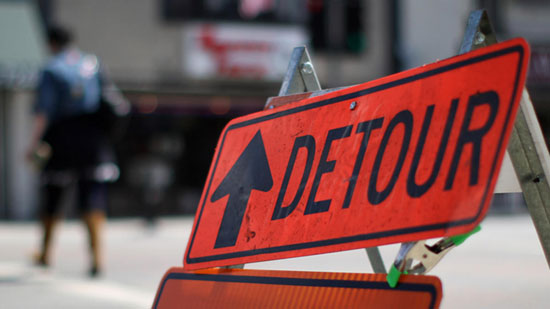
A favorite surface street alternative to the jammed 405 will be partly out of commission for six weeks.
It’s long been a faithful alternate route for masses of motorists seeking to avoid the construction-plagued 405 Freeway, but now Sepulveda Boulevard is getting its own turn in the hot seat.
From Friday, March 14 through April 28, a half-mile stretch of the roadway from Montana Avenue to Church Lane will be completely closed during the weekends and every weeknight. It will have a single lane open in each direction during the work week from 6 a.m. to 10 p.m.
Workers will be completely reconstructing and paving this section of the roadway. A week later, they’ll launch a similar effort on a .6 mile stretch of Sepulveda from Mountaingate Drive to Skirball Center Drive, beginning March 21 and running through April 21.
Although there’s been plenty of work on Sepulveda as the massive 405 Project has unfolded—most notably for utility relocation—the upcoming rebuilding and resurfacing work represents the most extensive series of closures yet to hit the boulevard, which has received heavy use as an alternate route for years, even before freeway construction started in 2009.
“Sepulveda is the only primary alternative for the 405 in the corridor. It has always been popular,” said Edward Yu, who directs the city of Los Angeles’ Automated Traffic Surveillance and Control Center (ATSAC). Since the freeway project began, Sepulveda and other local roadways have felt the impact, he said.
“Sepulveda does carry a significant amount of traffic,” he said, noting that some 30,000 vehicles each day pass through the area of the upcoming closures.
Motorists will need to navigate the situation differently from the way they approached the extended freeway closures of Jamzilla or the two Carmageddons.
“The impacts from Jamzilla and Carmageddon lasted only a weekend, while the work on Sepulveda may have impacts for up to six weeks,” Yu said. “This has different repercussions.”
Drivers might need to change their commuting patterns, leaving later or arriving earlier than usual. And they definitely should drive more carefully on the 405; distracted driving and the resulting fender-benders will be even more challenging with two sections of Sepulveda under construction.
“Sepulveda is going to work well as long as the 405 Freeway is flowing,” Yu said.
Even as they urge the public to be aware of the construction and plan accordingly, project officials have decided that the Sepulveda work does not rise to the level of getting its own nickname.
Dubbing it “Sepulvedageddon,” for instance, might suggest that the work is on the same level of the major, multi-hour closures of the freeway itself, said Metro spokesman Dave Sotero. In fact, he said, the Sepulveda work is “more complicated than a Carmageddon operation,” with staggered hours of full closures and lane reductions over a long period of time.
Metro is not doing any Carmageddon-style advertising, either. But that doesn’t mean that officials are treating the closures lightly. The city Department of Transportation will be doing its part to keep things moving through the area with additional traffic control officers, more signage and close monitoring by the traffic control center so that officials can adjust the timing of traffic signals if needed.
Still, “it’s going to take longer to get through this area,” Sotero said. “They anticipate traffic backing up as far as Wilshire.”
And if that happens, well, you can always ditch the trusted alternate route and hop on the freeway.
“This time,” Sotero said, “the 405’s coming to the rescue of Sepulveda Boulevard.”
Posted 3/13/14
Exposing a mountain of deceit
March 12, 2014
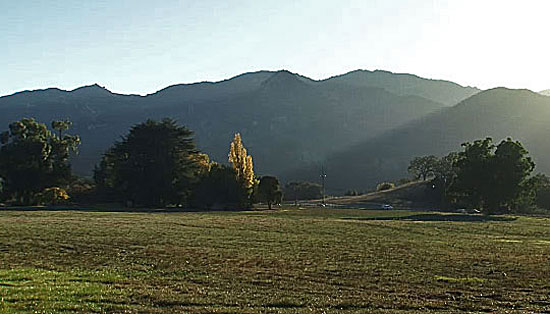
Opponents of a plan that would protect the Santa Monica mountains for generations to come have launched a misinformation campaign to advance their own vested interests.
Last month, the Board of Supervisors adopted a widely-hailed, landmark plan to preserve one of our region’s most precious natural resources—the Santa Monica Mountains. Under this blueprint for environmental stewardship, streams would be protected from pollution, ridgelines would be spared the scars of unrestrained development, historic groves of native oaks would be saved from the ax and a public in need of recreational opportunities would forever find a serene haven in the hills above Los Angeles.
This plan—known as a Local Coastal Program, or LCP—resulted from the work of an unprecedented coalition of groups and individuals, including the Sierra Club, Heal the Bay, the Santa Monica Mountains Conservancy, the Las Virgenes Homeowners Federation, the California Coastal Protection Network, State Senator Fran Pavley, Assemblyman Richard Bloom and a broad cross-section of the equestrian community. The Board of Supervisors approved the LCP by a 4-1 vote amid an outpouring of support.
But now, as the California Coastal Commission prepares to consider the plan, a disinformation campaign has been launched by a small army of lawyers and lobbyists, representing developer clients who do not want to play by the rules. They are shamelessly placing their self-interest above the public interest. And they are advancing this agenda not by stepping forward themselves. They are hiding behind a smokescreen they created by falsely generating fears among equestrians, backyard gardeners and others that the plan would rob them of the things they hold dear.
Make no mistake, these big-moneyed real-estate interests have one thing in mind: to derail the LCP so they can profit from an environmental jewel that, in the process, would be destroyed and lost to us all.
I encourage you to read the plan yourself here. In the meantime, here is the truth behind the more blatantly false misrepresentations that have surfaced in recent days:
FICTION: The LCP bans the riding, boarding and training of horses in Malibu.
FACT: The proposed plan specifically supports the riding, boarding and training of horses in the Santa Monica Mountains. It calls for a substantial increase in the current areas where such activities are permitted and would allow homeowners in unincorporated areas to board horses in their backyards, which is now prohibited by county codes. What’s more, the plan encourages the establishment of equestrian-friendly trailhead parking and staging areas to promote low-cost public access to trails. The plan clearly states that it seeks to preserve the equestrian traditions of the Santa Monica Mountains.
FICTION: The LCP was sprung on an unsuspecting public.
FACT: For months, the county and my office engaged hundreds of individuals and groups during the preparation of the LCP, resulting in the unprecedented coalition that coalesced behind the plan. Indeed, many of the plan’s provisions are the result of the thorough and constructive input we received from residential, environmental and equestrian stakeholders. Moreover, for six weeks before the Board of Supervisors’ vote, the LCP was posted online and placed in local libraries and government offices. It was also presented to more than 30 homeowner organizations, the Santa Monica Mountains Trails Council, equestrians, environmental organizations, representatives of neighboring cities and counties, and numerous other organizations.
FICTION: The LCP would commercialize the rural character of the Santa Monica Mountains.
FACT: The LCP’s guiding principle is that “resource protection has priority over development.” To that end, the plan would cut by nearly two-thirds the area zoned for commercial development under the plan. In fact, less than one percent of the Coastal Zone is slated for commercial use. Among other things, the LCP prohibits: ridgeline development, long access roads that carve-up natural hillsides, the blocking of streams, commercial vineyards and the destruction of oaks, sycamores and other native woodlands. It also strictly limits grading and imposes lighting restrictions to preserve the night sky. In addition, thanks in large part to the efforts of the county, state and other public partners, more than half of the Coastal Zone has already been acquired as public parkland on which development is restricted.
FICTION: The LCP would turn the City of Malibu into another resort town ridden with chain stores, severing the town’s connection to its rural origins.
FACT: The LCP does not in any way govern land use or business within the City of Malibu. It addresses the roughly 50,000 acres of unincorporated territory within the Coastal Zone north of the City of Malibu, between Ventura County and the City of Los Angeles. The City of Malibu has its own LCP, which governs land use inside the city. Land use decisions in the City of Malibu are made by the Malibu City Council. Land use decisions in the unincorporated county are governed by the Board of Supervisors. Neither agency has jurisdiction over the other.
FICTION: The LCP prohibits backyard fruit and vegetable gardens and bans vineyards.
FACT: The LCP explicitly protects the right of all new and existing homeowners—as well as schools and other community uses—to maintain fruit and vegetable gardens. At the urging of many environmental leaders, the LCP would prohibit new commercial vineyards because of their serious impact on water quality in our streams, beaches and the Santa Monica Bay. The policy prohibiting new vineyards would also prevent the loss of sensitive habitat and avoid concerns over the industrial spraying of pesticides near homes and the areas where tens of thousands of visitors come each year to enjoy the region’s beauty and recreational opportunities. Nevertheless, out of fairness to existing vineyard owners, legally established vineyards that currently exist would be allowed to remain under the LCP.
FICTION: The LCP will take away your dogs.
FACT: This is patently—and ridiculously—false. The LCP maintains the same rules for dogs as we have in the county code today.
FICTION: The LCP will add fees and costs.
FACT: The LCP would save the average property owner seeking permits thousands of dollars. Under the status quo, homeowners who want to build within the Santa Monica Mountains Coastal Zone must first go to the county to get an “approval in concept.” Once they finish the county process, they must proceed to the Coastal Commission for a public hearing, further review and more fees. Once the LCP is certified by the Coastal Commission, however, property owners will have a one-stop shop at the County of Los Angeles and they will no longer have to go to the Coastal Commission, pay a second set of fees and go through a second layer of governmental review.
So, there you have it. Those are the simple facts, which I urge you to verify for yourself.
The Santa Monica Mountains LCP is the product of years of meticulous analysis and negotiation. Its opponents want to delay and ultimately kill this important plan. And they are using deceitful tactics—including dishonesty—to try to achieve those goals. This cannot be allowed to happen.
The Santa Monica Mountains represent one of the largest remaining unspoiled coastal resources in Southern California. Future generations will not forgive us if we fail to seize this opportunity.
Posted 3/12/14
Looming train shortage at Metro
March 12, 2014
As two Los Angeles light rail lines race toward completion, there’s trouble ahead on the tracks. Unless train car production can be significantly accelerated, there won’t be enough vehicles to serve both new lines—Phase 2 of the Expo Line to Santa Monica and the Gold Line Foothill Extension to Azusa—if they open as scheduled in late 2015 and early 2016 respectively.
Metro is so concerned about the problem that it’s dispatching a delegation to the manufacturer’s headquarters in Japan later this month in hopes of finding a way to speed up production—a tall order for a company that the agency acknowledges is on track with the aggressive schedule mutually agreed to under its contract.
So, with a likely initial shortfall of about 50 train cars, the issue presents some tough decisions for Metro, all of which are likely to be unpopular with the traveling public. It could delay the new lines’ openings, operate them with shorter, more crowded trains, offer less frequent service, or redeploy cars from elsewhere in the system, thus spreading the pain more broadly.
The shortage is expected to be most severe in the first months of operation for the two new extensions, with steady improvements coming as new rail cars arrive throughout 2016. But even the prospect of a relatively short-lived disruption has been enough to strain the relationship between Metro, which will operate the lines, and the two construction authorities charged with successfully completing the projects.
Samantha Bricker, chief operating officer for the Exposition Light Rail Construction Authority, expects Expo Phase 2 to be ready for testing in the summer of 2015, which would make it possible for the line—running from Culver City to Santa Monica— to serve the public as early as December, 2015. But she’s worried that the train car shortage could impede that schedule and disappoint passengers looking forward to jumping aboard the westernmost phase of a light rail line that’s already attracting large numbers of riders.
“If these projects are done on time and there are no trains there, the public is going to go nuts,” Bricker predicted.
Metro’s Gold Line Foothill Extension, running from Pasadena to Azusa, is expected to open just two months later. Habib Balian, chief executive officer of the Foothill Construction Authority, said he, too, is worried that his line’s opening will be delayed or marred by diminished service in the early months.
“It’s going to sit there and cobwebs are going to grow until Metro starts service, or they are going to put wimpy service on all the rail lines,” Balian said, referring to the possibility of importing rail cars from elsewhere in the system.
The roots of the problem go back to 2010, when a previous manufacturer, AnsaldoBreda Inc., failed to meet the specifications for an earlier order of Gold Line cars, according to Richard Hunt, who manages Metro’s rail car procurements.
Given the time crunch, Metro’s chief executive officer, Art Leahy, urged Board members to act quickly and, in April, 2012, after a competitive bidding process, the Board awarded a new contract to another company, Kinkisharyo International, LLC. After Kinkisharyo landed the contract, it relocated its U.S. headquarters from Boston to El Segundo and is currently building a facility in Palmdale where the final assembly of the Metro rail cars will take place.
Metro officials say they are confident that Kinkisharyo can deliver, but due to the time lost after parting ways with AnsaldoBreda, the process is now a year behind schedule.
No easy solutions are apparent, but Metro is brainstorming fixes and contingency plans, said Brian Boudreau, an executive officer who oversees major capital projects. All options remain on the table.
On March 27, Metro Board Chair Diane DuBois and Pam O’Connor, chair of the Expo Authority and a member of Metro’s Board of Directors, will join Hunt on a delegation to Kinkisharyo’s headquarters in Osaka, Japan to check on the progress and see if anything else can be done.
Hunt said the agency already has submitted a formal request to Kinkisharyo to speed delivery, but acknowledged that the prospects of that are slim.
Kinkisharyo’s president, Teiji Tani, agreed.
“The schedule that Kinkisharyo International and Metro agreed to was and is very aggressive,” Tani said in an email. “Given the challenges we have been facing, it’s unlikely that the schedule can be accelerated on the initial 78-car order.”
The current contract calls for delivery of 78 light rail vehicles at a price of $299 million, with options for additional cars for Metro’s expanding light rail network that could bring the total value of the contract to $890 million. The agreement includes what Hunt called an “unprecedented” delivery schedule—about twice as fast as normal. Kinkisharyo agreed to deliver the first 78 cars at a rate of 4 per month, beginning in September, 2015. The final installment wouldn’t arrive until January 20, 2017, about a year after the rail lines are expected to open.
Metro’s chief of operations, Debra Johnson, demurred on the question of how big the impact on transit riders could be, but said that “all options have to be assessed.”
“Here we are, stewards of the taxpayers, and we are going to do our due diligence to make sure they are least-impacted,” Johnson said.
Metro’s Board of Directors is scheduled to get a status update on the situation in April, including feedback from the delegation to Japan as well as contingency plans for running the lines without all the cars.
In the meantime, Kinkisharyo officials say they are keeping things moving as fast as possible.
“We are finalizing design, setting up our assembly plant in Palmdale and starting to produce the initial two cars, also known as test cars,” Tani said. “We’ll soon start hiring 100 additional employees for that plant.”
Posted 3/12/14
Staying strong for the marathon
March 6, 2014
Dr. Seth Gamradt is director of orthopedic athletic medicine at Keck Medicine of USC and team physician for USC athletics. Here’s his quick rundown for surviving Sunday’s race:
Fuel: It is critical to fuel your body before the race. Eat high carbohydrate meals (80 percent of intake) for several days prior to the race to build up your store of glycogen, a crucial energy source for your body. On the morning of the race try to eat a 500-800 calorie breakfast 2-3 hours before the race. Limit fiber to avoid mid-race gastrointestinal upset. Predictability is key: eating foods you know and that worked well on your long training runs is critical for a calm stomach and high energy on race day.
Shoes: It seems obvious, but avoid changes in equipment on race day, especially shoes. Wearing your tried and true runners will help to prevent the foot pain and blistering that are common in long-distance running.
Hydration: Before the race, pay attention to urine color, aim for light yellow as a sign of adequate hydration. Although sweat rates vary from runner to runner, a good guideline for hydration is 6-8 ounces of fluid every 20 minutes. Avoid over-hydrating, which can lead to stomach upset. Make sure your race-day hydration consists of energy drinks containing carbohydrates and electrolytes and water. Consuming water alone during the race can lead to hyponatremia, which is caused by dilution of the blood’s sodium level and can be very dangerous.
Energy Gels/Bars: Commercially available pre-packaged carbohydrate sources are an important fuel source in triathlon and distance running. Again, familiarity is key to avoid race- day stomach upset, so stick with energy snacks you’ve consumed during your training. Consume one 45-60 minutes (with water) after the race starts and every 45-60 minutes thereafter.
Lubrication/Skin Protection: Lubricate sensitive areas with anti-chafing, anti-blister products. Believe it or not, severe blistering or chafing can end your race prematurely. For sun protection, apply sports sunscreen that protects against UVB and UVA rays at least 30 minutes before running, and consider wearing sun protective clothing made specifically for running.
Pace: The adrenaline of the race start will lead to the possibility of starting too fast. Begin your pace near or slower than your typical pace from your long training runs to avoid a late race flame out.
Pain: You may experience pain, soreness, muscle ache and fatigue on race day from training. If you typically take non-steroidal anti-inflammatory drugs (NSAIDs – Advil, etc.) or acetaminophen (Tylenol) before training runs, do not change this on marathon day. However, if you have not been using these over-the-counter medications, race day is probably not the time to experiment.
Danger Signs: As mentioned, some soreness is expected on race day. However, if you begin to experience sharp pain with each step, swelling in a joint, escalating pain anywhere in your body or you begin to limp, it is not advisable to push through these types of symptoms and finish the race. In addition, confusion, light-headedness, chest pain, and shortness of breath all can be signs of a significant medical issue—seek medical attention immediately.
Completing the L.A. Marathon is an important goal you have set for yourself. Make sure you do the things on race day that support the training you have done up to this point and you will have the best opportunity to hit the finish line feeling like a winner!
A long-running debate
March 6, 2014
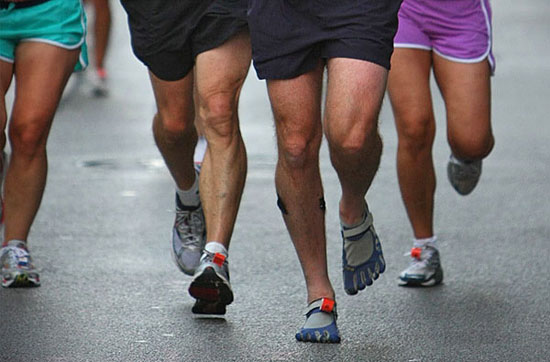
A revolution in distance running led some die-hard striders to wear practically nothing on their feet.
Visit the L.A. Marathon’s Facebook page and you’ll find yourself in a world of hurt.
“I start to lose feeling/circulation from my forearms up to my fingers,” one dispirited runner posted last week during a live chat with Dr. Seth Gamradt, director of Orthopedic Athletic Medicine at the Keck Medical Center of USC.
“I have pain when I bend my knee,” reported another would-be marathoner.
“My legs tend to [go] numb after 5 miles,” said yet another, followed by still others who complained of everything from shin splints to sprained ankles to stress fractures.
But ailing bodies weren’t the only concern as the 29th L.A. Marathon approached. One young woman weighed in with a question that has been the great obsession of the running community for the past several years, one that you might say has led to profound sole searching.
The young woman told Dr. Gamradt that she was worried about having “incorrect running form” and wondered whether she should change her style to land first on her forefoot, rather than on her heel. No way, he told her, it would take months for her body to become accustomed to a new foot strike.
“To dramatically change your stride for no reason is asking for trouble,” Gamradt, a triathlete, said the other day as he recalled the woman’s question. “Some people are developing stress fractures and injuries trying to convert to that style… My whole thing is that if you’ve been running well with your traditional foot-strike pattern, then what’s the reason to change?”
You might think that, of all sports, none could be simpler than one in which you simply put one foot in front of the other, even if it is for 26.2 grueling miles. But during the past few years, a revolution has occurred on the streets and in academia that has called into question the very notion of how we should run and what we should put on our feet, if anything.
In other words, there’s a lot more than meets the eye to those wildly-colored kicks you’ll see pounding the pavement during Sunday’s sold-out L.A. Marathon.
None of this is about getting to the finish line faster, the experts say. It’s about trying to sidestep injuries—a never-ending obsession for most runners, especially those who push their bodies to the brink and beyond.
For decades, running shoe companies have tailored their products to this injury-prone crowd, offering pricey shoes that claim to provide extra stability or cushioning, depending on a runner’s foot and gait. But in 2009, Christopher McDougall’s best-selling book, Born to Run, upended the industry’s conventional thinking and marketing machine.
In his book, McDougall chronicled the seemingly superhuman feats of the Tarahumara Indians of Mexico, who can run 100 miles a day across rugged canyons while wearing flimsy sandals assembled from strips of leather and old tire tread. McDougall argued that clunky, heavily-padded modern running shoes encourage people to unnaturally hit the ground first on their heels, sending excessive impact force through their feet and legs, increasing the risk of injuries. McDougall said his study of the Tarahumara Indians showed that, instead, runners should land gently on their forefoot, wearing as little shoe as possible or none at all.
The next year, a widely-publicized Harvard study seemed to back him up, suggesting that forefoot striking strengthens feet, reduces impact and helps runners avoid or mitigate such repetitive stress injuries as plantar fasciitis and “runner’s knee.”
Almost overnight, the era of barefoot running and “minimalist” shoes was born. Shelves in both specialty running stores and mass-market retailers were soon lined with light, flexible shoes that included a lower heel to help facilitate an easier forefoot strike.
Runner’s World writer Scott Douglas says that in 2012, “when minimalism was in its zealot phase,” he began work on a book about the phenomenon. But by the time “The Runner’s World Guide to Minimalism and Barefoot Running” was published last year, Douglas says, “the pendulum had begun to swing back.”
“I wrote it at exactly the wrong time,” says Douglas, a runner of 35 years. He says there’s now actually “a backlash against minimalism” as runners have come to realize that good, injury-free running involves more than shoes. In fact, a study published in January in the British Journal of Sports Medicine found that runners who switched to minimalist shoes, without slowly adapting to them, had two to three times as many injuries.
“It’s simplistic to think that by putting on new shoes, it’ll fix everything,” Douglas says. “Shoe selection is a part of that but certainly not all of it. The winner of the L.A. Marathon would still look amazing in old-style running shoes.”
Amby Burfoot has the long view of all this, having watched fads come and go in the running community for decades. In 1968, he won the Boston Marathon and has returned every five years since to run the world’s most famous race. A light heel-striker himself, he says that the single most important advice he can give runners is to not take overly long strides, which lead to an excessively hard heel strike.
“Most of the shoe cultist people, especially the ‘barefoot people,’ are now changing their tune. It’s not your shoe but your running form and foot strike that makes the difference,” says Burfoot. “The shoe companies, with their hordes of lawyers, are now being very careful about what they say about injuries and performance. They’re appealing to the soul of the runner, the persona of the runner. No one dares say their shoes will prevent running injuries.”
As for that pendulum, Burfoot agrees that it’s now swinging in a new direction. As proof, he says he need look no further than his own brother, who’s had great success lately with a new wave of shoes with “super thick soles.”
Their nickname: “maximalist.”
For Dr. Seth Gamradt’s tips on how to avoid injuries and stay strong for the marathon, click here.
Posted 3/6/14
Maximizing our “big gulp”
March 6, 2014
Here’s a factoid for those who think last week’s storms are water under the bridge now: Thanks to Los Angeles County’s flood control system, about $18 million worth of that rain is in the bank.
Los Angeles County Public Works Director Gail Farber reported this week that the county’s flood control infrastructure—sprawling, complex and generally taken for granted by Southern Californians—managed to collect and store some 18,000 acre-feet of rainfall by the time the skies cleared.
That’s enough water to supply 144,000 people for a year—roughly the population of Pasadena. Or, for Westsiders, a year’s worth of hydration for everyone in Santa Monica, the Pacific Palisades, Topanga Canyon and Malibu combined.
At about $1,000 per acre-foot for imported water, that’s good news, Farber told the Board of Supervisors on Tuesday. But in the midst of this drought, even more of that precious precipitation could have been saved had county dams not been clogged with dirt, sand and gravel from prior storms.
Instead, Farber said, water at Santa Anita Dam and Devil’s Gate Dam was released to maintain a safe capacity and prevent flooding.
“Had we more capacity behind our dams,” says Farber, “we could have captured more rain than we did.”
The storms dumped nearly a foot of rain last week on parts of Los Angeles County, raising water levels by as much as 36 feet at some of the county’s 14 dams. Though eagerly anticipated in this water-starved year, the rain also brought the threat of mudslides in foothill neighborhoods where brushfires have hit hard in recent months.
County workers had been out in force, working with surrounding municipalities and first responders to buttress vulnerable streets and help homeowners get ready, and were on hand round-the-clock as the storms hit.
Farber said the Department of Public Works alone “had more than 325 employees out there day and night, working 12-hour shifts in the pitch black with mud and debris flowing, and the rain coming down, and snow in the mountains, and hail sometimes.”
For all of that, the downpours scarcely made a dent in the three-year drought that has been withering the region, says Deputy DPW Director Massood Eftekhari.
“We’ve only accumulated 22 percent of what we normally accumulate, compared to prior years,” Eftekhari says. “We still have to conserve and collaborate to capture and utilize every drop we get.”
To that end, Public Works officials have been focused on maximizing the system’s capacity to better store rainwater when future storms hit. The county’s dams are set up not just to prevent rains from inundating neighborhoods in the flats and foothills, but also to collect storm water. That water later is released gradually onto massive spreading grounds where it percolates into the underground aquifers that supply about a third of L.A. County’s drinking water.
But each accumulation of rain also brings an accumulation of sediment and runoff. That sediment—hundreds of thousands of cubic yards of gunk in a typical year, enough to fill the Rose Bowl several times over—settles in dams and debris basins, and takes up space that otherwise would hold valuable rainfall.
Typically, that gunk gets trucked out over time by Public Works crews who dispose of it in designated “placement sites”, landfills and rock quarries—an epic task that, until recently, followed a time-honored schedule. After the historic 2009 Station Fire, however, so many tons of charred debris washed into the system that the county’s entire sediment management plan had to be recalculated, says Farber.
Now, she says, at least four county dams—Devil’s Gate, Big Tujunga, Pacoima and Cogswell—have been put on an accelerated sediment removal schedule. Devil’s Gate, which is near Pasadena, is first in line, with an environmental impact report already underway, and Pacoima will be soon to follow.
That intensified need to make room in the system has drawn some fire from neighborhoods near some of the dam sites. Though they have the most to lose should the clogged dams overflow, they also stand to suffer the greatest inconvenience from the truck traffic inherent in removing millions of cubic yards of muck.
As communities around the dams measure their risk against the potential for upheaval, the officials noted that the county will be working with state and federal agencies to come up with efficient ways to capture more storm water and prepare for future storms.
Meanwhile, they remind, this is no time to let our guard down.
“This was a good-sized gulp, but the drought still is not over,” Eftekhari says.
Posted 3/6/14
Get there, or steer clear
March 6, 2014
Whether you want to get to the L.A. Marathon on Sunday or stay as far away from it as possible, we’ve got you covered.
For those who want to cheer on the thundering pack of more than 25,000 runners, here is the course map. Getting there via public transportation might be a good idea. But be aware: there are lots of bus detours in the works and Metro has the list here.
Finally, if you’d just as soon avoid the whole thing, check out the Los Angeles Department of Transportation’s list of street closures and estimated reopening times here. The DOT also reminds people to respect those temporary no-parking signs along the route. If the worst happens, they also have information on how to reclaim your towed car.
Posted 3/6/14




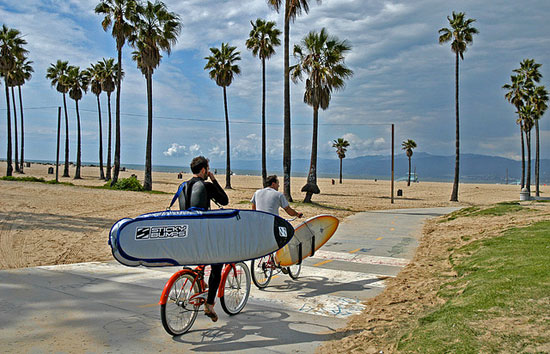
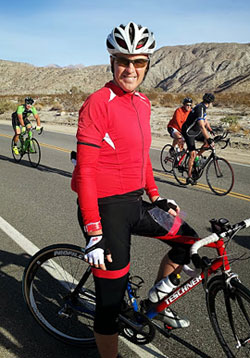


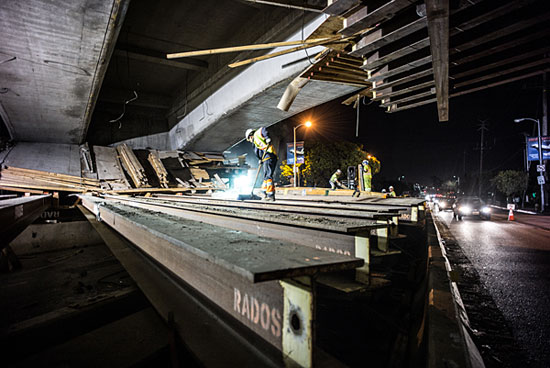



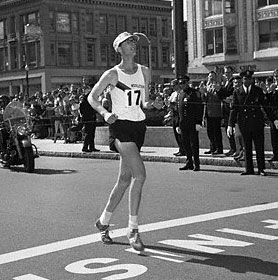
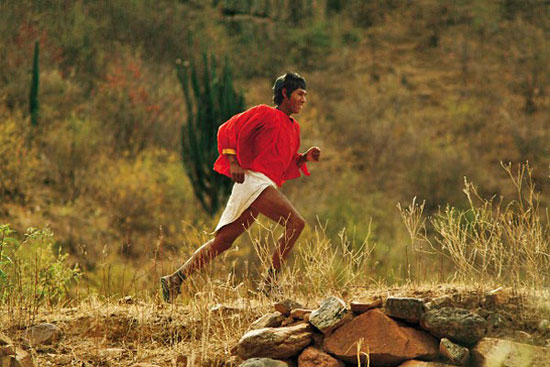

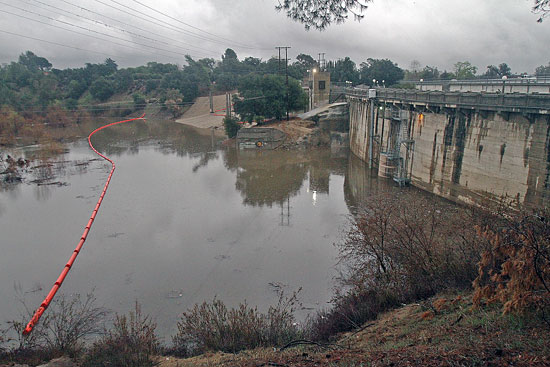






 Check for the latest closure information
Check for the latest closure information








